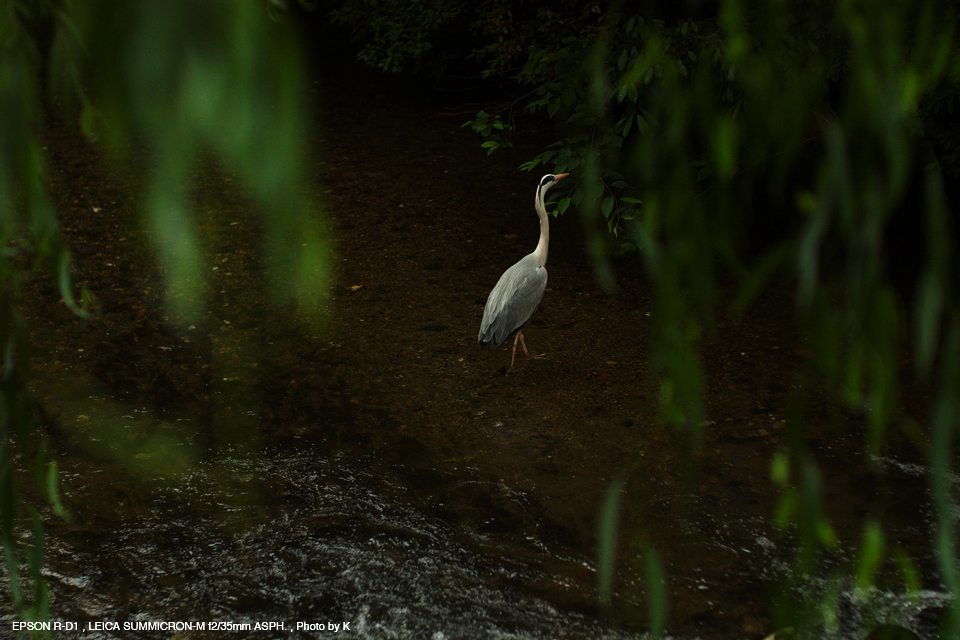
The R-D1 was released in 2004 and it was two years before Leica released the M8. It was the first digital rangefinder camera. Some minor changes were made in its successors the R-D1s and this R-D1xG, but they are almost the same except the back LCD: the first two models had a tilt/swivel LCD and they looked just like a film camera when the LCD was folded away. This new R-D1xG has a non-tilt/swivel LCD with the refined panel.
As soon as the R-D1 was released, lens gourmets bought it and mounted their favorite lens with a smiling face. It was extremely hard to get it right after it was released. An enormous number of L/M mount lenses are now mounted on a digital camera that shows the results immediately after shooting. This is so dangerous. Those "carriers" around me got bogged down one by one.
The R-D1 was made by maniacs. There is a watch movement on the top cover, and the servo driven indicators show shots remaining, battery life, file format/picture quality, and white balance. Surprisingly, the watch indicator was completely analog and the instruction manual even had a section to show how to "calibrate" the needles. The shutter was electric, but it was manually charged by the advance lever. The dial looked like a film rewinding dial, but it had other functions. The backside of the LCD had an ISO sticker-like 35mm conversion table. This very wild product can never be released unless the company top likes it.
Whereas the top cover is filled with the playfulness, it generates top class pictures. EPSON has been producing scanners and printers, so they have a great advantage in color imaging. Once you see the results, you can't believe that they are pictures of 6M pixels. They thinned the low-pass filter in order to show lens characteristics as they are, meaning they were so serious about the quality. Surprisingly, all these things happened in 2004, which was 6 years before the Olympus E-5 with the tuned low-pass filter was released. In that early period, they already took such an epoch-making approach with their maniac mind. As a result, the pictures generated by the R-D1 had the best quality among other cameras of the same specifications. Even after Leica released the lowpass-less M8/M8.2/M9, the R-D1's picture quality doesn't pale.
The picture has rich tonality and in particular the shadow has better tonality than the M8/M8.2/M9. While there's a big gap between RAW and JPG generated by these Leica cameras, the R-D1 produces perfect JPG pictures. And if the RAW data is developed and adjusted, it challenges Leica's output. If you don't even consider this camera just because of the 6M pixels, you're wasting one good choice. There're still many R-D1 users even though they have all digital Leica M cameras, and they still use the very first lot of the first version. This clearly proves the quality of the R-D1. Now, the price has become very reasonable and it makes this camera an entry digital rangefinder. Yet, this camera can be the last camera as well.

The picture has a nice contrast and slide film users must love it.

The highlight part tends to lose the detail, but the tonality from the mid-tone to the shadow is great.

I shot under (-2.7 from what the camera told) and raised the tone curve to the appropriate level. In this way, the picture becomes so powerful.

I feel so nice to get this crisp result.

With the M8/M9, it's not easy to get this color of the sunset.
You may think having more pixels is better than less because you have more freedom when cropping. But if the basic picture quality isn't good, the number of pixels doesn't make sense. The R-D1's sensor is similar to 35mm films. At around infinity, it can't fully resolve the subjects of high frequency (ex. leaves or branches of trees). The same goes for 35mm slide films, but compared to it, this camera's latitude is a little narrower, although it has a wider latitude in the shadow. In short, you can use it just like you are using a 35mm film.
Cameras over 10M pixels resolve distant high frequency subjects, but did we ever need the resolution higher than 35mm? We've been just fine with 35mm, and this means we can live with the R-D1. It becomes difficult to use ultra wide angle lenses because of the 1.5X crop factor, but it won't be too much of an issue because we mostly use normal angle on a rangefinder anyway. In addition, the R-D1 has something that Leica M cameras don't have: the life-size (1:1) viewfinder. If you're right eye dominant, you can look at the viewfinder by opening both eyes. Nothing else surpasses this pleasantness.


EPSON R-D1xG
6 MP CCD Sensor
3008 x 2000pixel
SD / SDHC Memory Cards
-2 EV to +2 EV, 1/3 f-stops
ISO 200 / 400 / 800 / 1600
1.0 x
1/2000s – 1s, B